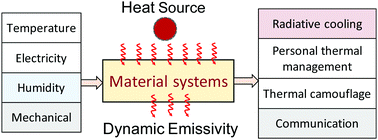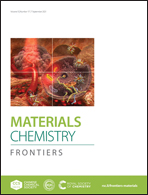Progress in dynamic emissivity regulation: control methods, material systems, and applications
Abstract
Advanced materials with tailored thermal emissivity underpin the performance of many technologies, including thermal detection, spacecraft components, and camouflage platforms. The thermal emissivity of materials can be modified through surface treatment such as coating and surface nanostructure. Dynamically controlling the thermal radiation of objects is of great importance, which endows materials with smart functions integrated with sensing, reacting, and even adapting and with potential for practical applications such as personal thermal management, infrared camouflage, radiative cooling, wireless communication technology, etc. This article reviews the working principles, material systems under various stimulation, and applications based on the recent progress in dynamic infrared regulation, including temperature, humidity, electricity, mechanical strain, and the above stimuli-triggered reconfigurable systems. Phase transition, ion or electron intercalation, refractive index variation, and topographic change can lead to energy level variation or change in the path of light, resulting in dynamic thermal emissivity. It is expected that new materials such as graphene and various nanostructures such as cavities and gratings have been developed rapidly in recent years, giving the possibility of low-energy-input control of flexible dynamic emissivity materials.

- This article is part of the themed collection: 2021 Materials Chemistry Frontiers Review-type Articles


 Please wait while we load your content...
Please wait while we load your content...